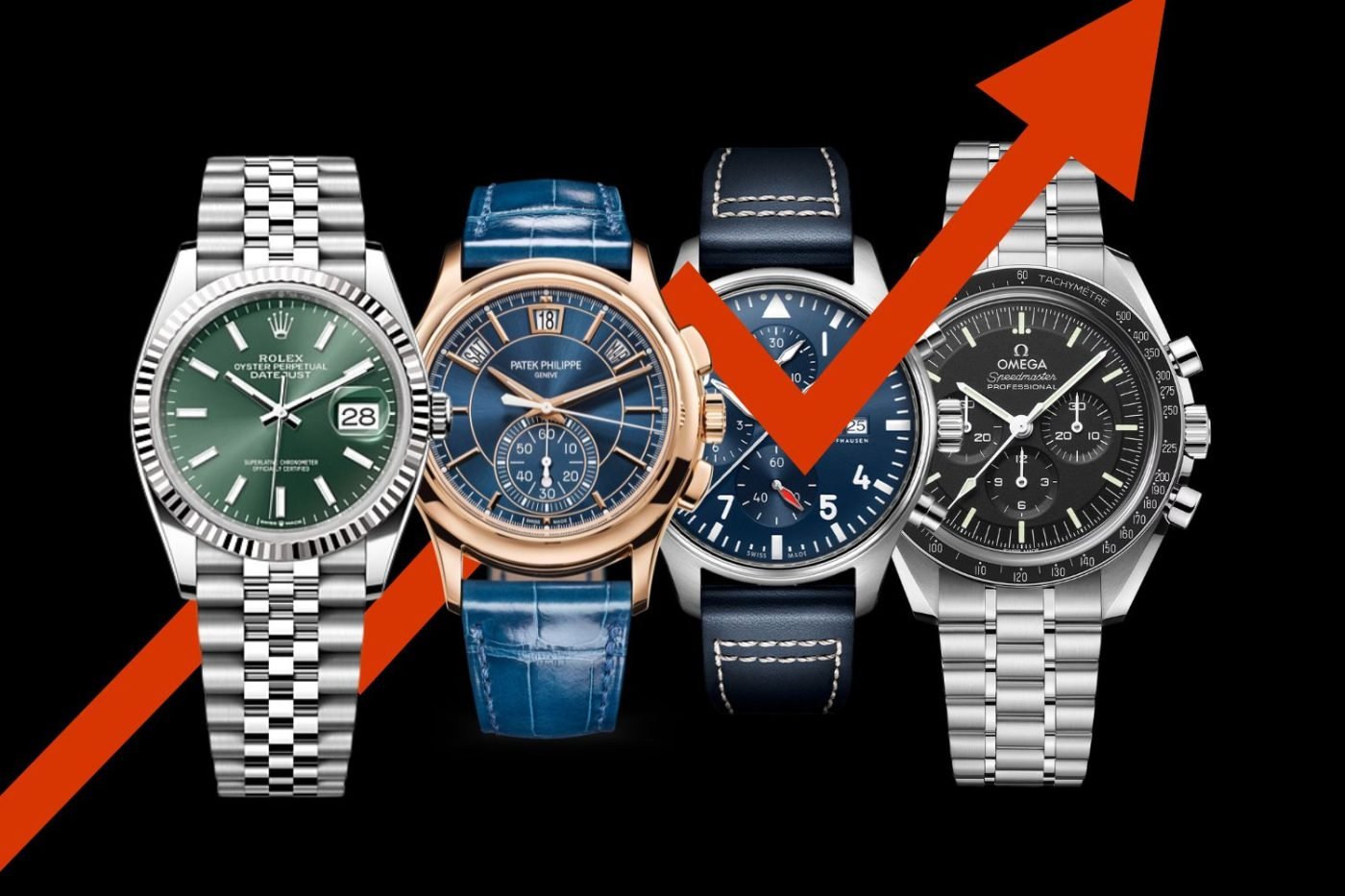If your dream watch has been sitting in your wishlist for a while, it might be time to act, because prices across the luxury watch world are on the move again.
Over the past three months, major players like Rolex, Omega, IWC, Patek Philippe, and Chopard have quietly nudged up their retail pricing. And while we’ve seen this before, the latest hikes are hitting different in a tough economy.
Let’s start with the crown.
Rolex implemented a round of price increases earlier this year and doubled down in May for the U.S. market. While stainless steel models crept up by a modest 1 to 2 percent, the big jumps are happening with precious metal pieces.
Curated news for men,
delivered to your inbox.
Join the DMARGE newsletter — Be the first to receive the latest news and exclusive stories on style, travel, luxury, cars, and watches. Straight to your inbox.
The yellow gold Daytona, for example, has risen by nearly 20 percent in the United Kingdom since January. Blame inflation, but also rising gold prices and a very deliberate strategy to reinforce Rolex’s position at the top of the food chain. Where it gets interesting is how much is a gold Rolex really worth? $90,000 AUD? And is the demand there like it was 2 years ago?
Omega has also followed suit. The Swatch Group’s golden goose quietly lifted prices by up to 8 percent in May, driven in part by a new 31 percent U.S. tariff on Swiss-made watches.
Not every buyer will feel it immediately, especially with secondary market prices still soft for many models, but if you’re shopping new, expect a noticeable shift. A great example is the Moonshine Gold Speedmaster which fetches a fraction of it’s RRP on Chrono24.
IWC has adjusted pricing across its full range, including the latest Ingenieur and Pilot’s releases.
Meanwhile, its 2025 novelties, including some seriously high-end pieces like the Big Pilot XPL Shock Absorber Tourbillon, point to a brand that’s pushing its technical innovation, and F1 connections.
One hike which caught my eye was the ceramic Pilot’s Watch Chronograph Top Gun Lake Tahoe, for example, was retailing at $17,400 AUD earlier this year. It now sits at $19,000, nearly a $2,000 jump. That’s around 9.2%. It seems ceramic prices are going bananas too.
Then there’s Patek Philippe, whose Nautilus and Aquanaut collections continue to defy gravity.
While official prices rose by 3 to 5 percent this quarter, the secondary market suggests demand isn’t slowing down. It’s part of a wider shift, as Patek carefully tightens its distribution while steadily reinforcing its positioning through scarcity and annual price revisions.
Chopard, too, has made its intentions clear.
The family-owned brand has been quietly increasing its average price over the past year, and co-president Karl-Friedrich Scheufele has publicly confirmed the trend will continue, “Our average price will further increase significantly in 2024”. As a Maison that’s investing heavily in vertically integrated production, sustainability, and L.U.C innovation, it makes sense, but it also puts them firmly in line with the broader push towards fewer, better, and more expensive watches.
So what’s driving it all?
Gold prices are up 27 percent year-on-year, the biggest annual jump in over a decade. U.S. tariffs are making life harder for Swiss exports. Blame Trumponomics for that. And brands are using the moment to recalibrate their value perception. Demand definitely isn’t keeping pace, the price tags certainly are.
If you’ve been eyeing a timepiece for some time, now might be the moment to move or ask for a discount, which will take you back to early 2025’s prices.

